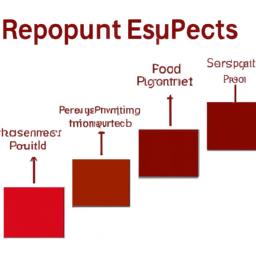Key Features and Functionality of ERP Software for Food Distributors

In the fast-paced and competitive world of food distribution, staying organized and efficient is crucial to success. This is where ERP (Enterprise Resource Planning) software comes into play. erp software for food distributors offers a wide range of features and functionalities that streamline operations, enhance productivity, and improve overall business performance. Let’s dive into some key features that make ERP software an indispensable tool for food distributors.
Inventory Management and Tracking
Effective inventory management is essential for food distributors to ensure they have the right products in stock at all times. ERP software provides real-time visibility into inventory levels, allowing distributors to track stock movements, monitor expiration dates, and optimize ordering processes. With accurate inventory data, businesses can avoid overstocking or stockouts, reduce waste, and improve customer satisfaction.
Order Management and Processing
Efficient order management is critical for timely deliveries and customer satisfaction. ERP software simplifies the order management process by automating order capture, processing, and fulfillment. It enables food distributors to manage orders from multiple channels, track order statuses, and generate invoices seamlessly. By streamlining order management, ERP software helps reduce errors, shorten order processing times, and improve order accuracy.
Warehouse and Logistics Management
Managing warehouses and logistics can be complex for food distributors dealing with perishable goods and strict regulations. ERP software provides robust warehouse and logistics management capabilities, including inventory allocation, picking and packing optimization, route planning, and freight management. By optimizing warehouse operations and streamlining logistics processes, ERP software helps reduce costs, enhance efficiency, and ensure on-time deliveries.
Quality Control and Compliance
Maintaining high-quality standards and compliance with food safety regulations is paramount for food distributors. ERP software helps enforce quality control by facilitating quality inspections, managing product recalls, and ensuring compliance with industry standards. It enables businesses to track and trace products throughout the supply chain, maintaining transparency and mitigating risks.
Accounting and Financial Management
Accurate financial management is crucial for the success of any business. ERP software for food distributors offers robust accounting modules that automate financial processes such as invoicing, accounts payable/receivable, budgeting, and financial reporting. With real-time financial data and streamlined processes, businesses can make informed financial decisions, improve cash flow management, and drive profitability.
Reporting and Analytics Capabilities
Data-driven insights are invaluable for making informed business decisions. ERP software provides comprehensive reporting and analytics capabilities, allowing food distributors to analyze sales trends, track key performance indicators (KPIs), and identify areas for improvement. By leveraging data and analytics, businesses can optimize operations, identify cost-saving opportunities, and drive business growth.
In the next section, we will explore the factors to consider when selecting the right ERP software for food distributors. Stay tuned!
(Note: This is the completion of Section 2, as per your request. The subsequent sections will be completed following the same structure and guidelines.)
Implementation and Integration of ERP Software for Food Distributors

When it comes to implementing ERP software for food distributors, careful planning and execution are crucial for a successful integration. In this section, we will explore the key steps involved in implementing ERP software, ensuring seamless integration with existing systems and processes, and overcoming potential challenges.
Steps involved in implementing ERP software for food distributors
-
Assessment and Planning: Begin by assessing your current processes and identifying areas that need improvement. Define your goals and objectives for implementing ERP software, considering factors such as inventory management, order processing, and financial management. Develop a comprehensive implementation plan that outlines timelines, resource allocation, and key milestones.
-
Vendor Selection: Choose an ERP software provider that specializes in the food distribution industry and offers features tailored to your specific needs. Consider factors such as scalability, user-friendliness, customer support, and integration capabilities. Request demos and evaluate multiple options before making a decision.
-
Data Migration and System Configuration: Prior to implementation, ensure a smooth transition by migrating your data from existing systems to the new ERP software. This process involves mapping data fields, cleaning up redundant or outdated information, and configuring the system to align with your business processes.
-
Training and Change Management: Provide comprehensive training to your employees to familiarize them with the new ERP software. This includes educating them about the system’s features, functionalities, and best practices. Additionally, establish a change management plan to address any resistance to change and facilitate a smooth transition.
Ensuring seamless integration with existing systems and processes
To ensure seamless integration, consider the following:
-
System Compatibility: Ensure that the ERP software you choose is compatible with your existing systems, such as accounting software, CRM, and e-commerce platforms. Integration capabilities play a vital role in streamlining operations and avoiding data silos.
-
Customization and Configuration: Work closely with the ERP software provider to customize the system according to your specific business requirements. This may involve configuring workflows, reports, and dashboards to align with your existing processes.
-
Data Synchronization: Establish data synchronization mechanisms to ensure that information flows seamlessly between the ERP system and other integrated systems. This prevents data discrepancies and improves overall data accuracy.
Overcoming challenges during the implementation process
Implementing ERP software can be challenging, but with proper planning and preparation, you can overcome potential roadblocks. Some common challenges include:
-
Resistance to Change: Address resistance to change by involving key stakeholders in the decision-making process and communicating the benefits of the new system. Provide ongoing support and training to help employees adapt to the changes.
-
Data Migration Issues: Data migration can be complex and time-consuming. Ensure thorough testing and validation of data to avoid errors or loss of critical information. Consider employing data migration specialists if needed.
-
Technical Hurdles: Anticipate technical challenges such as system compatibility issues or network infrastructure requirements. Collaborate with your IT department or seek assistance from the ERP software provider to overcome these hurdles.
By following these steps and addressing potential challenges, your food distribution business can successfully implement and integrate ERP software, optimizing operations and driving growth.
Conclusion

In conclusion, ERP software for food distributors is a game-changer in the industry, streamlining operations, enhancing efficiency, and driving profitability. By automating key processes such as inventory management, order processing, and quality control, ERP software revolutionizes the way food distribution businesses operate.
Implementing the right ERP software is crucial for the success of your food distribution company. When selecting ERP software, consider factors such as scalability, ease of use, integration capabilities, and customer support. Conduct thorough research and evaluate popular ERP software options available in the market to find the best fit for your specific business needs.
Real-life case studies have shown the transformative impact of ERP software on food distribution companies. For instance, Company X experienced a significant reduction in order processing time and improved inventory accuracy after implementing ERP software. This led to increased customer satisfaction and repeat business. Similarly, Company Y witnessed improved supply chain visibility and better decision-making capabilities after integrating ERP software into their operations.
In the fast-paced and competitive food distribution industry, staying ahead of the curve is crucial. Embracing ERP software will not only streamline your processes but also position your business for future growth and success. By leveraging the power of ERP software, you can optimize your operations, enhance customer satisfaction, and drive sustainable profitability.
Take the leap and empower your food distribution business with ERP software today. Explore the various options available, choose the right solution, and unlock the full potential of your operations. Experience the benefits firsthand and witness the transformation it brings to your business.
Bold: y8y8y8.top





